How to Fix the Samsung Galaxy Tab Reboot Loop?
A Samsung Galaxy Tab trapped in a reboot loop repeatedly restarts without completing the boot process, typically due to a failed update or an app issue. This indicates a problem with the tablet’s software loading, often caused by a faulty firmware update or software conflict, most commonly from an interrupted or unsuccessful update.
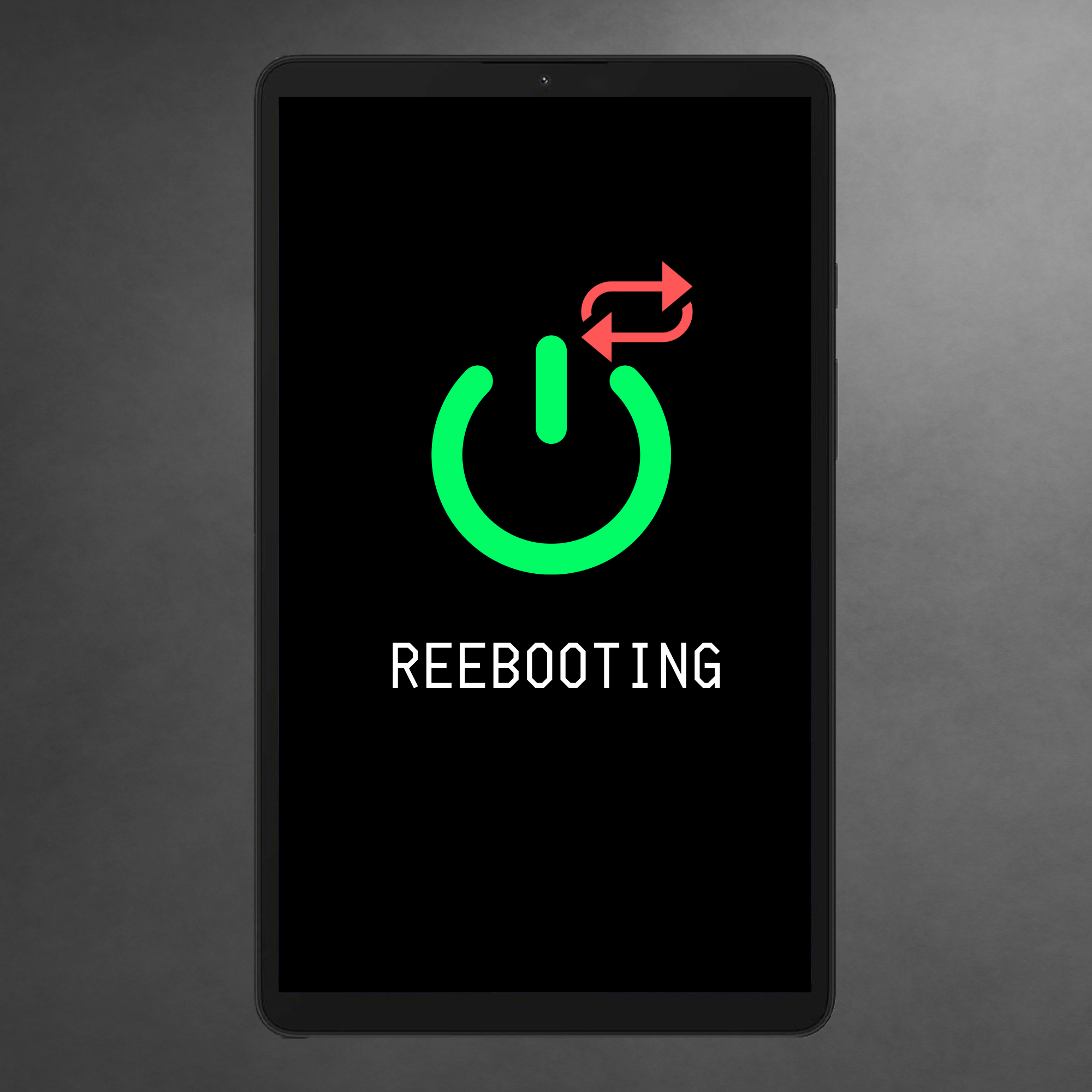
Other possible causes include corrupted system files, hardware issues like battery problems, or overheating. In this article, we will discuss solutions to solve this issue.
1. Charge the Device to 100% While it is Powered Off
To make sure your tablet has enough power to start up correctly, it’s important to fully charge it while it’s turned off. Doing this reduces the chance of power issues stopping important startup functions, especially if battery problems were causing the restart loop. By charging it to 100%, you’re providing a steady power source that can help it finish starting up and might fix the problem if power issues were to blame.
- Plug the Galaxy Tab’s charger into a power outlet and connect the tablet to the charger while it is rebooting.
- Press and hold the Power button for about 6 to 10 seconds; the device will shut off.

- After the shutdown, the battery charging icon will appear on the screen instead of it restarting.
- Allow the Galaxy Tab to charge until it reaches 100%.
- Once the tablet is fully charged, disconnect it from the charger, power it on, and it should exit the reboot loop.
2. Erase the Device’s Cache Entirely
Clearing your device’s cache can sometimes fix a boot loop by getting rid of temporary system files that might be damaged. These files help apps run better but can cause issues if they pile up or have errors after updates. By wiping the cache partition, you make sure the device starts with new, undamaged files, without affecting your personal data.
- Power off the Galaxy Tab.
- Once it is off, simultaneously press and hold the Volume Up and Power buttons until the Samsung logo appears, signaling the tablet’s entry into Android System Recovery (ASR) mode.
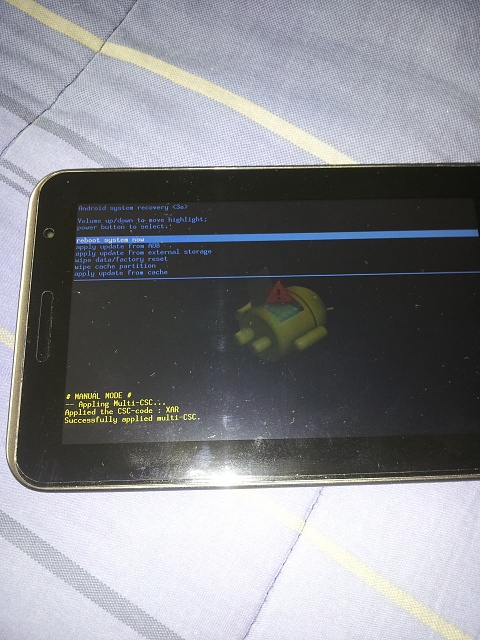
- Using the volume rocker, navigate to the ‘wipe cache partition’ option and select it by pressing the power button.
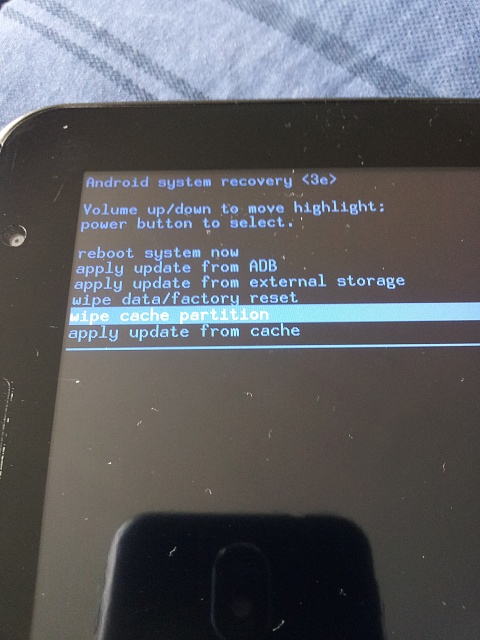
- After the cache has been cleared, select ‘Reboot System Now’ from the main menu to restart the tablet.
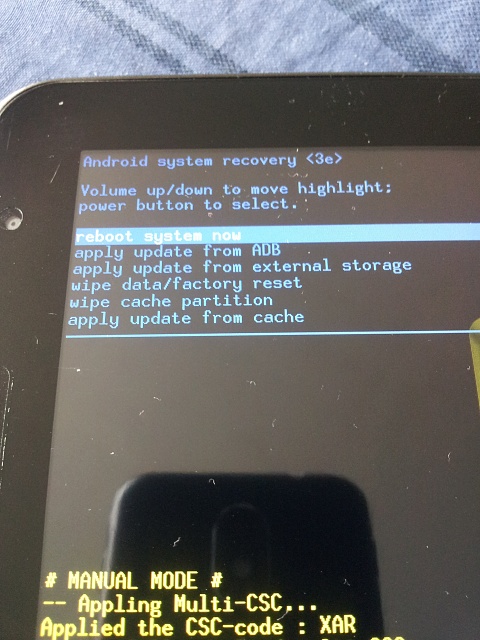
3. Reset the Device to Factory Settings
This issue might be caused by things like damaged system files, failed updates, or conflicts with new apps. Factory resetting the device can fix these problems by restoring it to its original state, removing any settings or files that cause issues. This process clears the device, allowing it to work normally without software glitches.
- If the previous steps fail, as a last resort, you may need to reset the device:
- Turn off the device and boot it into Recovery Mode, as outlined in solution 2.
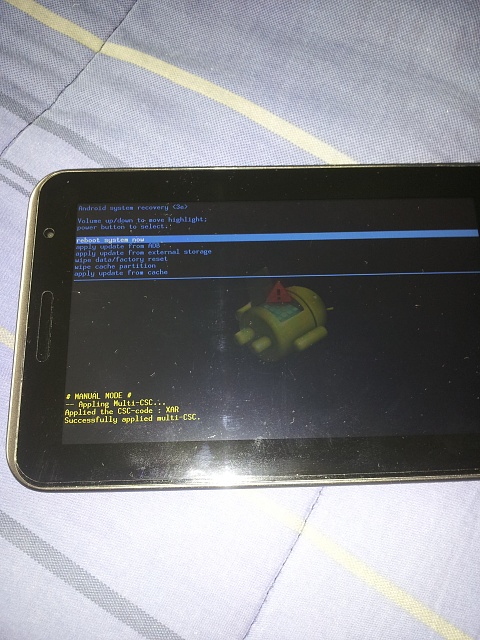
- In Recovery Mode, navigate to the wipe data/factory reset option with the Volume rocker, and select it using the Power button.
- Select Yes – Erase All User Data on the following screen to confirm your choice.
- Wait for the factory reset to complete.
- Lastly, select Reboot System Now to restart the device with the Android OS.
4. Downgrade Your Android Device
When newer system updates introduce bugs or compatibility issues, reverting to an earlier version of Android that was free from these problems can be key to escaping the reboot loop issue. This process effectively rolls back any changes that could be causing the device to malfunction.
However, be aware that downgrading should be done with caution, as it requires a certain level of technical expertise and can sometimes result in data loss. Always ensure to back up your data before attempting this fix.
You can flash an older version of Android using ODIN after acquiring it from the official website.